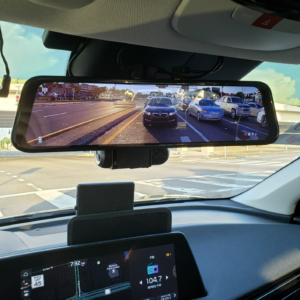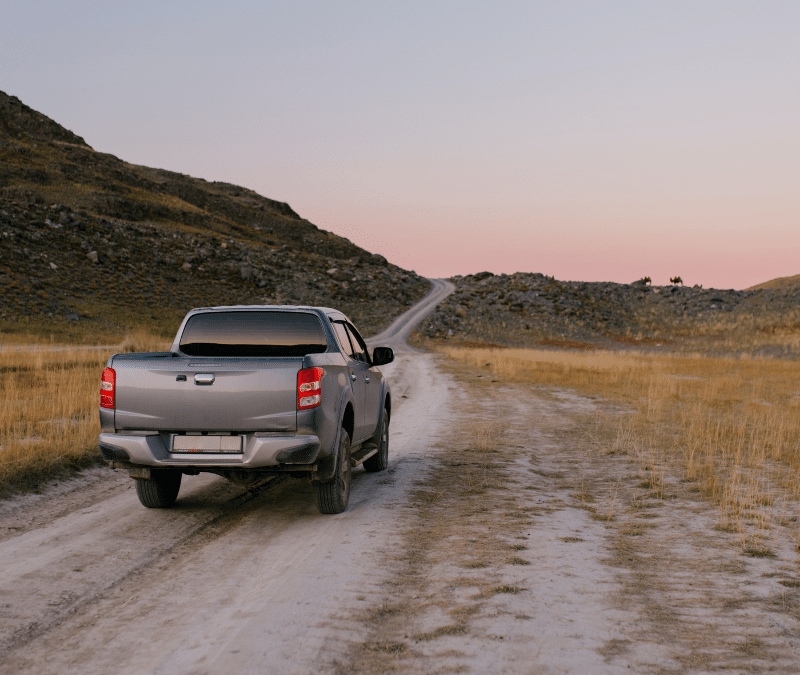Tips to Ease Driving Anxiety
Driving style refers to the way a person chooses to drive or the way he or she is used to driving. It includes the driver’s attention and confidence level, the choice of driving speed and spacing, etc. As a new indicator of driving behavior, driving style has a holistic function in the interpretation of driving behavior.
Taubman-Ben-Ari and colleagues developed the Multidimensional Driving Style Inventory (MDSI). The MDSI is currently the most widely used driving style measure with good reliability and validity. Researchers in many countries have often used it directly or based their studies on it.
Taubman-Ben-Ari classifies driving styles into four categories: risky, anxious, angry, and cautious. The adventurous driving style refers to the intentional violation of safe driving norms, thrill-seeking driving, fast speed, illegal overtaking, etc. Anxious driving style refers to anxiety while driving affected by alertness, tension, and accompanied by distracted activities. Angry driving style, which refers to provocative, angry, hostile attitude and behavior on the road, such as frequent flashing of lights to other drivers to show provocation. Cautious driving style refers to drivers who plan ahead, pay attention to road information, are patient, humble, calm and obey traffic management.
In this article, I would like to talk to you about the anxious driving style.

What is Driving Anxiety
If we talk about anxious driving style, it is necessary to mention another word that is more often used – driving anxiety. It is also known as driving phobia, which is a common psychological reaction of novice drivers. The increasing stock of cars in modern society has led to more serious traffic congestion and more frequent traffic accidents. Many people experience anxiety and nervousness when driving, even to the extent of fear and dread, causing a psychopathic reaction, manifested as panic about accelerating, upshifting, emergency braking, pointing the brake, downshifting, pressing the line, and emergency handling of stalling.
Driving Anxiety Symptoms
Have you ever had such an experience? You don’t dare to drive on the road, even under the guidance of a coach, you are still anxious and nervous inside. At that time, you are inwardly tense because you are afraid of driving to scuff the pedestrians and bicycles on the road, your eyes are fixed on the front, even the back of your palms are cold sweat, and your shoulders are stiff. In severe cases, you may even brake extremely frequently for fear of any object moving around you, including cars, pet dogs, road guardrails, and even traffic police.
Another obvious manifestation is to look around for up to ten seconds before turning, then hit the blinker, and then turn. The whole process is fearful. Likewise, when changing lanes, driving is also difficult.
If you have any of these driving anxiety symptoms, then you may have a driving phobia.
Then Reasons for Anxiety while Driving
A driving phobia is a lack of confidence in your driving skills.
On the one hand, many novice drivers are new to the road, so they do not have the confidence to drive on the road by themselves, and thus the above symptoms appear. On the other hand, there is no shortage of people in real life who, despite the age of their driver’s license for several years, are still afraid to drive, even if it is only for a very short distance. They drive extremely slowly on the road, have poor foresight and adaptability when driving, and are afraid they will run into other vehicles or pedestrians.
The Taubman-Ben-Ari study mentioned above shows that gender and age also have an impact on anxiety while driving. On the anxiety dimension, female drivers scored higher than males, and older drivers scored higher than younger ones.
In addition, further related studies by other scholars have shown that as car drivers’ driving time continues to increase, anxiety becomes more pronounced, leading to an increase in the anxiety level index. Furthermore, sleep duration also affects the anxiety level index in a concave curve pattern, which means that drivers who drive without sleep or with excessive sleep are prone to anxiety, leading to an increase in the anxiety level index.
How to Overcome Driving Anxiety
This section will be divided into two sections on how to overcome driving anxiety for novice drivers and veteran drivers, respectively.
For Veteran Drivers
If you are an old driver of many years of driving age, you will encounter sometimes when you do not want to drive, or briefly lose your sense of car. But you at least still dare to drive on the road. Because even if the feeling of driving is gone, the driving skills are still there. Older drivers can still use their accumulated driving skills and experience to judge the position of the body, determine the distance to follow the car and so on.
In this case, how to get over driving anxiety? You have already mastered enough driving skills, so how to adjust yourself is the main thing for you to consider. The findings of the above study may be helpful to you.
First, try to avoid driving continuously for long periods of time. As mentioned before, as car drivers’ driving time continues to increase, anxiety becomes more pronounced, so if you suffer from anxiety while driving, try to drive only short distances. If you must drive long distances, you need to make sure that you enjoy enough rest after a period of driving. Accept multiple stops to rest during a long journey while making sure that a single driving session is of an acceptable length.
Next, make sure you get the right amount of sleep. Since studies have shown that too much or too little sleep can increase anxiety while driving, it is especially important to enjoy a good amount of sleep at night to avoid falling into a driving phobia.
For New Drivers
But novice drivers are different. Their driving phobia comes from poor driving skills, as they don’t know how to judge the position of the car and how to avoid blind spots. If new drivers want to overcome their anxiety while driving, the most important point is the actual driving practice on the road. As the basic skills of driving gradually become skilled, the driving phobia of new drivers will gradually disappear.
In this case, how to get over driving anxiety? Generally speaking, novice drivers need to go through the following three stages from beginners to skilled guys.
- First, choose an open space to practice. If you must face all kinds of complicated road conditions on the first day of practice, then even a talented person must be in trouble. So, at first, you should choose a simple place to practice. The vehicle recommendation is also to choose a performance close to what you are familiar with. It is recommended to go to the suburbs to find open roads for driving, and to ensure that the length of a single practice is more than an hour or so, so that the effect of practice should be good.
- Then, try to sit in the passenger side of a veteran driver to learn. For some people who have a driver’s license but do not have a car, this is very critical. When you just get your license, others are unlikely to lend you a car to drive. And if you are in the internship period, it is quite troublesome to deal with any violations. Therefore, if you want to improve your driving skills, you can find an experienced driver among your friends, sitting in his passenger seat to learn about the methods and experience of veteran drivers. Although sitting in the passenger seat alone does not fully simulate your own driving situation, the experience is still quite valuable.
- Finally, driving on real roads under the guidance of a coach. This can be done at the same time as the second step. When practicing, you can find a veteran driver who you trust and has many years of driving experience to sit on the passenger seat, as if you had an amateur coach with you. While driving, you can patiently listen to his or her advice to see which operations should be learned to improve driving skills but not learned in driving school. In addition, in case there is an unexpected traffic condition ahead and you don’t notice it, the other partner can also alert you at the first time to avoid accidents.
Driving Anxiety Tips
In the previous section, we have analyzed the main strategies for overcoming anxiety while driving in two groups of people, veteran drivers, and novice drivers, based on both driving style type studies and ways for novices to gain progress in driving skills, respectively.
However, given the deficiencies in driving skills of novice drivers, anxiety while driving in novice drivers is usually more difficult to overcome than in older drivers. Novice drivers’ driving phobia stems from the lack of proficiency in driving skills, so they usually cannot accurately judge the relative position of the car on the road and have difficulty avoiding the limitations of blind spots. At this point, novice drivers are usually afraid that they will make mistakes in certain driving operations, which can lead to potential traffic accidents.
Therefore, new drivers need to master some basic driving skills to overcome driving phobia, and thus make themselves more familiar and confident with driving. In this regard, we have prepared some driving anxiety tips for specific details, hoping to provide effective help for novice drivers to overcome their driving phobia.
Adjust the Correct Car Seat Position
Only if the car seat is adjusted properly can the driver use the correct sitting posture. The correct adjustment of the car seat position will directly improve the driver’s comfort while driving at the same time helping the driver better control the car and observe the blind spot. If the car seat is not properly adjusted, the driver is not only more tired of driving, but also cannot control the vehicle well.

Learn to Overcome the Effects of Blind Spots
Blind spots are like a headache for drivers. There are always some of the non-motorized vehicles or pedestrians on the road that do not follow the traffic rules and can easily get into the blind spot of the car while driving. So, to overcome the anxiety while driving, it is important to learn how to overcome the effects of blind spots.
In this area, an advanced car recorder can effectively help you. First, the front and rear cameras achieve a 360-degree real-time surveillance range, which can help you better observe the pets or pedestrians in the blind spots. In addition,
The mirror dash cam equipped with hardwire kit provided by us has exclusive parking mode. After putting into reverse gear, a panoramic display image of the rear of the car will appear on the screen, and then you will see that there are green, yellow, and red auxiliary lines displayed from far away and will not be adjusted with the steering wheel rotation. The specific role of the three lines can be seen here, in short, this is an advanced mode that allows novices to quickly achieve veteran reversing results.
Learn to Judge the Position of the Wheels while Driving
Then, when you drive on the road, it is impossible to stick your head out of the window to watch the wheel position. And for some models, even if you stick your head out, it is difficult to check the position of the wheels. This requires novice drivers to have the ability to know roughly where the wheels are, and how far the wheels are from the lane line, while sitting in the car. Once you judge the position of the wheels successful, you also know the position of the body, and thus can better avoid collisions with other vehicles.
With this aspect in mind, we highly recommend that your car be equipped with an advanced driving recorder during practice. Our flagship products such as our WOLFBOX’s G900 can provide you with real-time footage from both the front and rear cameras, which in turn will help you better grasp how to determine the position of your wheels during your novice period.






Leave a comment
This site is protected by hCaptcha and the hCaptcha Privacy Policy and Terms of Service apply.